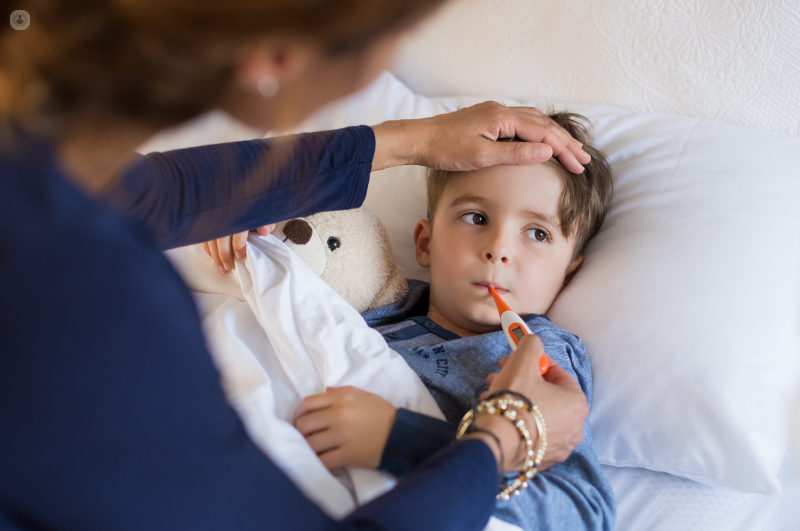Neumonía en niños
What is pneumonia in children?
Pneumonia in children is inflammation or infection in one or both of the lungs, caused by bacteria or a virus. The lungs fill up with pus or fluid which makes it difficult to breathe. Often it begins after an upper respiratory tract infection before moving to the lungs. Children can develop pneumonia after a cold or flu. Most of the time children can fight pneumonia, unless their immune system is weak and they develop severe pneumonia as a result.

What are the symptoms?
Symptoms can be different for children of different ages. Symptoms in children under one month can include:
- Difficulties breathing or rapid breathing
- Drawing the tummy under the chest when breathing
- Not feeding properly
- Fever or temperature that rises and falls quickly
- Irritability
- Trouble sleeping
Older children might also experience:
- Coughing
- Loud breathing and wheezing
- Abdominal pain and nausea
- Loss of appetite
- Chills
- Bluish coloured lips and nails
How is it diagnosed?
To diagnose pneumonia, the doctor will perform a number of tests and examine the child’s chest, listen to their breathing with a stethoscope to check for crackling sounds and take their temperature. If the pneumonia is mild, your doctor might want to perform x-rays and sputum tests.
What causes pneumonia in children?
Pneumonia is caused by bacteria or a virus and sometimes by fungi or parasites. The most common bacteria that causes pneumonia is called Streptococcus pneumoniae. The most common viral cause is normally the respiratory syncytial virus or influenza type A or B.
Can pneumonia in children be prevented?
Children can be vaccinated against bacterial pneumonia with the pneumococcal vaccine (PVC) at 2 months of age. The flu vaccine is recommended for children after the age of 6, especially those with chronic illnesses like asthma. To avoid viral pneumonia, your child should be taught good hygiene habits and stay away from cigarette smoke or areas where air pollution is high.
How is pneumonia in children treated?
Bacterial pneumonia is treated with antibiotic tablets or liquid. The child should improve a lot within the first 48 hours, but the full course of antibiotics needs to be taken for pneumonia to clear up.
If caused by a virus, antibiotics won’t work and it generally takes the child 4-6 weeks to fully recover.
There are certain at things that you can do at home to help your child recover faster:
- Make sure your child stays hydrated
- Make sure they get plenty of rest
- Pain medicine like paracetamol can be used for tummy pain
- Keep them away from smoky areas
Some children may require hospitalisation, if they have a chronic illness that affects the immune system, along with pneumonia, if they are vomiting and cannot keep down any medication or fluids, or if they need help to breathe. If your child experiences difficulty breathing, their lips are turning blue and they have a high fever, they need immediate medical attention.


